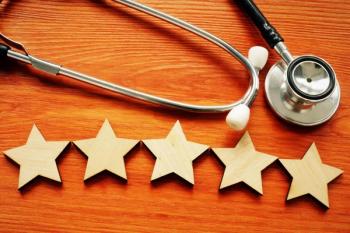
Acupuncture in 2000: Working its way into mainstream medicine
This ancient healing system continues to make inroads in modern health care. Are your patients among the 1 million Americans who have signed on?
Acupuncture in 2000:
Working its way into mainstream medicine
This ancient healing system continues to make inroads in modern health care. Are your patients among the 1 million Americans who have signed on?
By Deborah Grandinetti
Senior Editor
David Bole practiced acupuncture in Gainesville, FL, for more than a decade without getting a single referral from a physicianincluding any of those who were seeing him on the sly for their own health problems. It didn't matter that he had arranged for a local physician to supervise him. The medical community considered the discipline too fringe.
Things began to change in the mid-'90saround the time the FDA decided that acupuncture needles no longer had to be labeled for "investigational use," and the National Institutes of Health found "sufficient evidence of acupuncture's value to extend its use into conventional medicine." Now Bole gets a lot of referrals, particularly for conditions like carpal tunnel syndrome or migraines where, he says, "doctors don't want to use a drug or do surgery."
That's not the only shift. Now one in every 10 enrollees in the Florida School of Acupuncture and Oriental Medicine, which Bole directs, is a physician. They'll join an estimated 3,000 to 5,000 medical acupuncturists practicing in the US.
Some medical groups are embracing acupuncture with enthusiasm. For example, Minor & James Medical, a Seattle multispecialty group with more than 80 physicians, refers patients to on-site acupuncturists as part of the treatment protocol for fibromyalgia. (The regimen also includes physical therapy, nutritional counseling, psychotherapy, and meditation training.) At the Center for Complementary Medicine at Advocate Medical Group in Park Ridge, IL, the acupuncturists on staff participate in the weekly case review conference, which allows everyone on the physician-led team to learn the appropriate use of the discipline and to see how patients respond.
But this level of integration is still rare, despite the estimated 10 million treatments received each year by more than 1 million American patients. Experts say it will take another 10 years for the integration to become seamless.
For now, acupuncture and conventional medicine remain largely separate. Relatively few of the 12,000 licensed nonphysician acupuncturists practicing in the US work in medical settings. And the overwhelming majority of their patients self-refer. Although specific figures for acupuncture aren't available, a study by the Yale University Departments of Psychiatry and Public Health, published in JAMA in August 1999, found that only 8.8 percent of individuals who used an unconventional therapy, such as acupuncture, received a physician referral.
That number isn't likely to increase much any time soon. Although some insurers reimburse patients for acupuncture treatments only if a physician refers them, popular new "affinity" programswhich offer discounts to individuals who use the alternative practitioners in a networkdon't require it. These programs allow the insurers to respond, at least minimally, to marketplace demand for complementary and alternative medicine (CAM).
But their approach isn't likely to bring physicians and acupuncturists closer together. Few of these affinity programs actively foster dialogue between the CAM practitioner and the patient's physician. And that may pose risks to patients. For example, a cancer patient may be using Chinese herbs along with acupuncture to stimulate her immune system, even while her medical team is managing the cancer by temporarily suppressing the immune system. Even if a patient mentions to her physician that she's using Oriental medicine, problems still can arise. The physician won't necessarily understand what specific treatment the patient is undergoing if the caregivers don't talk to each other.
Perhaps the larger problem created by a lack of physician-acupuncturist communication is that it deprives physicians of the opportunity to observe when acupuncture is useful and when it isn't, and to use this knowledge to benefit other patients.
Where physicians and acupuncturists are communicating
But that type of learning is taking place among physicians who refer to acupuncturists and continue to monitor their patients, and even more intensively in a small number of clinics that actively integrate acupuncture and other CAM therapies into conventional medicine. Patient outcomes at such clinics could be crucial in determining whether other medical groups adopt integrative approaches, because physicians are naturally skeptical of the idea.
"Integration comes from trust," says Jim Blair, an acupuncturist at Minor & James' complementary care center. "Here at the center, acupuncturists and physicians have built trust only by rubbing elbows for the last 12 years." Blair thinks that when doctors have on-site acupuncturists, it's the best way to facilitate that trust. He says that in the last eight years, the percentage of Minor & James physicians who refer to acupuncturists has risen from 22 to 98 percent.
Kaiser Permanente in northern California started down the same road two years ago when it implemented a multidisciplinary chronic pain program that includes acupuncture. Access is tightly controlled; patients can enter the program only via physician referral, after having received a medical diagnosis and any necessary treatment from their physician. Even then, a patient who is interested in acupuncture will receive it only if Kaiser approves it for his specific medical condition and the pain management team deems it appropriate. "Patients can't just walk in and say, 'I want acupuncture for my mood disorder,'" says osteopathic physician Harley A. Goldberg, director of CAM for The Permanente Medical Group.
There is a dearth of data on how the incorporation of acupunctureor any of the CAM therapiesaffects the cost of care. But efforts are under way to examine integration from this perspective, too. HCFA is exploring whether Medicare should reimburse for acupuncture. (At least seven state Medicaid programs reimburse for acupuncture now, says FP Terrence E. Steyer, a Robert Wood Johnson Clinical Scholar in the Departments of Family Medicine and Internal Medicine at the University of Michigan.) Next spring, the National Center for Complementary and Alternative Medicine of the NIH will fund a $20 million, four-year initiative designed to identify and dismantle barriers to the integration of effective CAM therapies into standard medical treatment. The center hopes the studies will also shed light on how this integration affects health outcomes, resource utilization, and the cost of care.
Physicians are open, but still skeptical
NCCAM devised the initiative because its leadership recognizes that physicians aren't rushing to embrace even those CAM therapies where there is good data supporting clinical efficacy. That's as true for acupuncture as for any other CAM therapy. In a paper announcing the initiative, project officer Richard Nahin observed that the 1997 NIH Consensus Conference documenting the efficacy of acupuncture for the management of certain types of acute pain, as well as for nausea and vomiting, "has not had a wide impact on standard care as practiced by the conventional medical community."
Why not? That's one question NCCAM hopes its initiative will answer. St. Louis psychiatrist George A. Ulett, who received the first NIH grant to study acupuncture back in the 1970s, thinks physicians are uncomfortable with acupuncture because it smacks of the mystical. Bronx psychiatrist Michael Smith, who is considered an expert in the use of acupuncture in addictions, thinks the problem is that physicians have not been introduced to acupuncture in a reasonable way, so that every new claim seems suspect.
Another problem, he says, is that many of the early training programs for physicians were inadequate. He attended a number of such programs in New York in the mid-1970s. While physician enthusiasm was highhe could barely find a seat at one such conference in The Waldorf-Astoria ballroomthe quality of teaching was not. A lot of teachers tried to reduce acupuncture to quick formulas, he said. As a result, physicians who were poorly trained faulted acupuncture when it didn't bring the results they had anticipated.
But that's not true of every program, says Smith. One of the first physicians to present acupuncture in its full complexityFP Joseph M. Helmsis now chairman of perhaps the best-known physician acupuncture training program in the country. When Helms started the program at the UCLA office of continuing medical education two decades ago, he had five students. Now he presides over the training of 500 to 600 physicians annually.
While physician acupuncturists acknowledge a growing openness among their colleagues these days, the skepticism is still evident. The typical physician who refers a patient does so only as a last resort, after more conventional treatments have failed. As Malibu, CA, FP Gil L. Solomon observes, the patient a physician refers is usually "one he wouldn't mind losing." Wayne, NJ, anesthesiologist and internist Michael N. Doss, who incorporates acupuncture into his practice, says he wishes his colleagues wouldn't wait so long to refer. He's convinced he could get better results for patients if they started acupuncture earlier in the course of their illness or injury rehabilitation.
Acupuncture proponents say there are good economic and clinical reasons to consider acupuncture as a first-line treatment, or an early adjunctive treatment, for the specific conditions outlined in the NIH Consensus Conference report (see
To keep current on newer findings on acupuncture, refer to the NCCAM Web site at
Where is all this headed? The trend toward integration will continue as patient interest in acupuncture continues to grow. That's already driving an increase in the number of schools that educate physician and nonphysician acupuncturists, and, consequently, the number of graduates. According to April Wright, eligibility director of the National Certification Commission for Acupuncture and Oriental Medicine, the number of nationally certified acupuncturists in practice is expected to double in the next five years. The number of insurers who offer some kind of acupuncture benefit is also growing quickly. According to the 1999 Landmark Report II on HMOs and Alternative Care, 31 percent of the HMOs surveyed (roughly one-quarter of all HMOs) currently offer some kind of acupuncture benefit. Another 36 percent expect to in the next two to three years.
"My sense is that we're going to grow in presence, and that in a decade, acupuncture will be regarded as casually as most of the professional specialties," says FP and acupuncturist Joseph Helms.
Time will tell. As Kaiser's Harley Goldberg observes, "Acupuncture will become more integrated into the full spectrum of conventional care only if it proves to provide better care, for less cost."
Curious about when it might make sense to refer a patient for acupuncture? The conservative approach would be to limit your referrals to conditions identified by a 1997 National Institutes of Health consensus development conference panel. The panel concluded that there was clear evidence of efficacy in treating "adult postoperative and chemotherapy nausea and vomiting, and postoperative dental pain." The panel found the evidence less convincing for the following conditions, but still recommended consideration of acupuncture as an adjunct or alternative treatment for:
- Addiction.
- Asthma.
- Carpal tunnel syndrome.
- Fibromyalgia.
- Headache.
- Low back pain.
- Menstrual cramps.
- Myofascial pain.
- Osteoarthritis.
- Stroke rehabilitation.
- Tennis elbow.
Physician experts in acupuncture consider the list incomplete, however. "The clinical applications endorsed in the [NIH] report were based on the merits of the research design, rather than the breadth of possible clinical applications," says FP Joseph Helms, chairman of physician acupuncture continuing medical education programs at UCLA. Physicians who limit their referrals to that list miss extraordinary opportunities, he says. He recommends acupuncture for a wide range of general medical conditions, acute and chronic musculoskeletal pain, premorbid conditions, and some psychological disorders.
How to find a qualified acupuncturist
To find a physician acupuncturist in your area, call the American Academy of Medical Acupuncture at 800-521-2262, or visit its Web site at
Physicians are not eligible for full membership until they have completed a formal training program with a minimum of 200 hours of instruction, plus two years in practice and an additional 20 hours of training. The academy has also developed a board certification examination, which 400 have passed. Ask if there's a board-certified medical acupuncturist in your area.
To verify licensure for a physician or nonphysician acupuncturist, check with the National Acupuncture and Oriental Medicine Alliance, which makes sure an individual has the training and other credentials he claims. The board maintains a list of over 8,000 practitioners, all of whom have been verified as having a state license or national board certification in acupuncture or Oriental medicine with the appropriate state agency or national certification commission. You can check a name to see if it's in the alliance's database, which is on the Web, or call the organization at 253-851-6896. To reach the referral database, go to
Nonphysician acupuncturists qualify for national board certification by completing a minimum of 1,725 hours of instruction in an accredited program, taking a clean needle technique course, and passing an exam that includes both a written and a point-location component. The certifying body, the National Certification Commission for Acupuncture and Oriental Medicine, lists certified practitioners in a searchable database on the Web (
To verify that an individual received training at an accredited school, call the Accreditation Commission for Acupuncture and Oriental Medicine (301-608-9680). This is the national body responsible for accreditation and curriculum evaluation of acupuncture training programs. It is recognized by the US Department of Education. Dort Bigg, executive director, says that there are 34 accredited programs in the US, plus seven schools in candidate status. Bigg says the schools graduate 1,700 students a year.
David Azevedo, Carol Pincus, ed. Deborah Grandinetti. Acupuncture in 2000: Working its way into mainstream medicine. Medical Economics 2000;15:99.
Newsletter
Stay informed and empowered with Medical Economics enewsletter, delivering expert insights, financial strategies, practice management tips and technology trends — tailored for today’s physicians.














